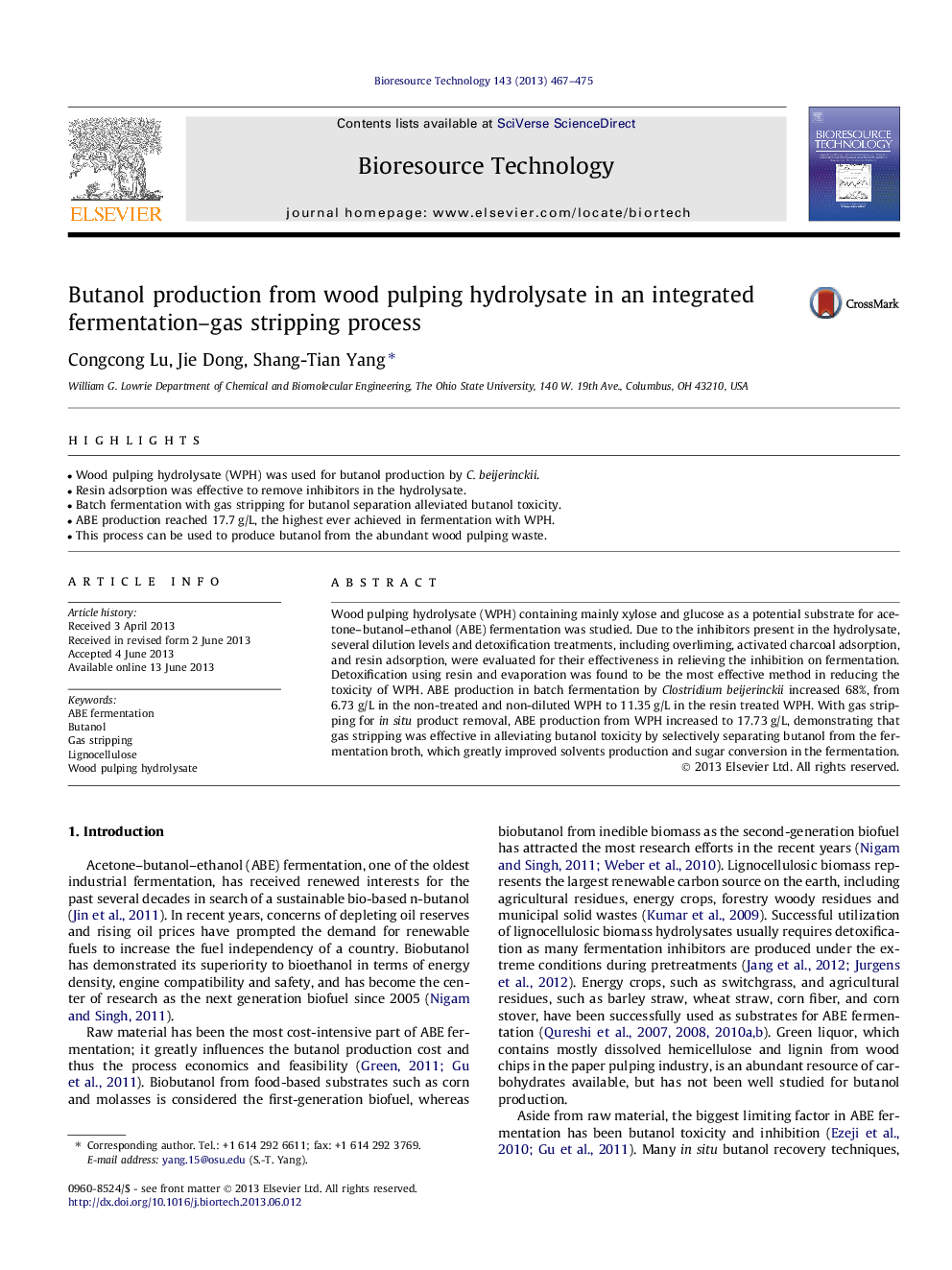| Article ID | Journal | Published Year | Pages | File Type |
|---|---|---|---|---|
| 7081444 | Bioresource Technology | 2013 | 9 Pages |
Abstract
Wood pulping hydrolysate (WPH) containing mainly xylose and glucose as a potential substrate for acetone-butanol-ethanol (ABE) fermentation was studied. Due to the inhibitors present in the hydrolysate, several dilution levels and detoxification treatments, including overliming, activated charcoal adsorption, and resin adsorption, were evaluated for their effectiveness in relieving the inhibition on fermentation. Detoxification using resin and evaporation was found to be the most effective method in reducing the toxicity of WPH. ABE production in batch fermentation by Clostridium beijerinckii increased 68%, from 6.73Â g/L in the non-treated and non-diluted WPH to 11.35Â g/L in the resin treated WPH. With gas stripping for in situ product removal, ABE production from WPH increased to 17.73Â g/L, demonstrating that gas stripping was effective in alleviating butanol toxicity by selectively separating butanol from the fermentation broth, which greatly improved solvents production and sugar conversion in the fermentation.
Related Topics
Physical Sciences and Engineering
Chemical Engineering
Process Chemistry and Technology
Authors
Congcong Lu, Jie Dong, Shang-Tian Yang,
